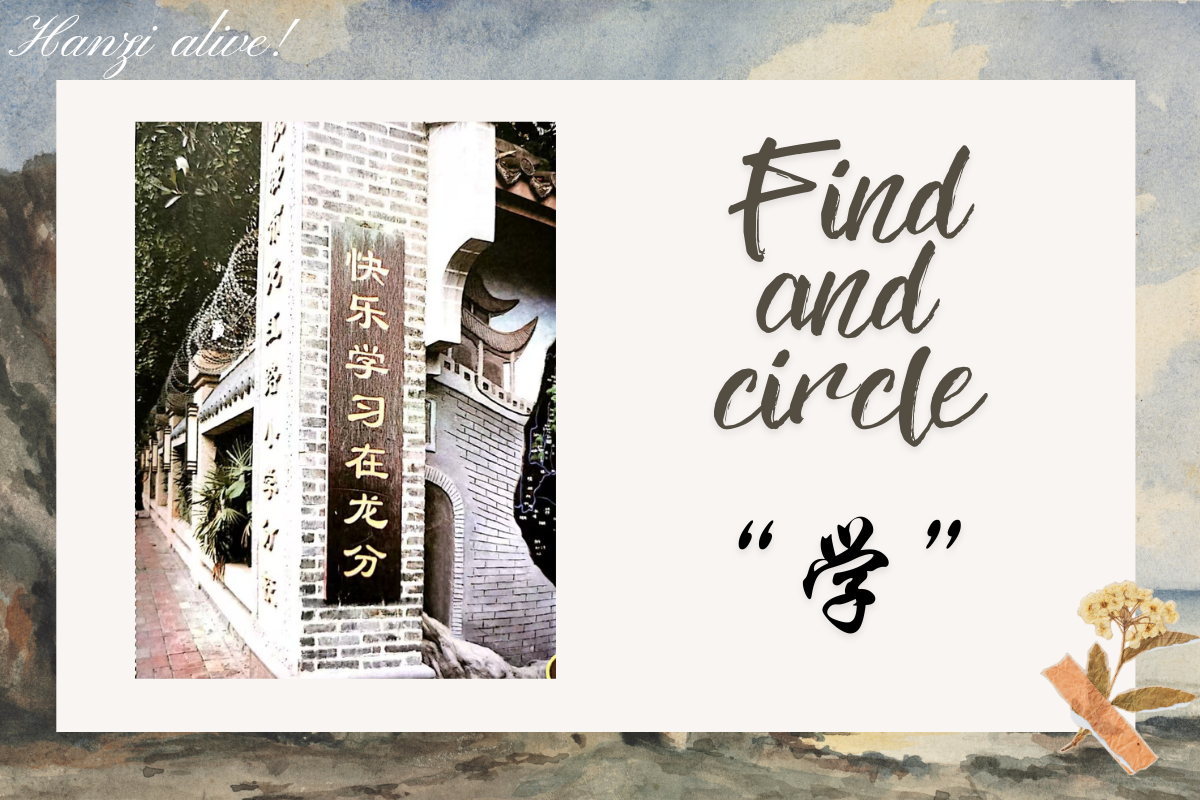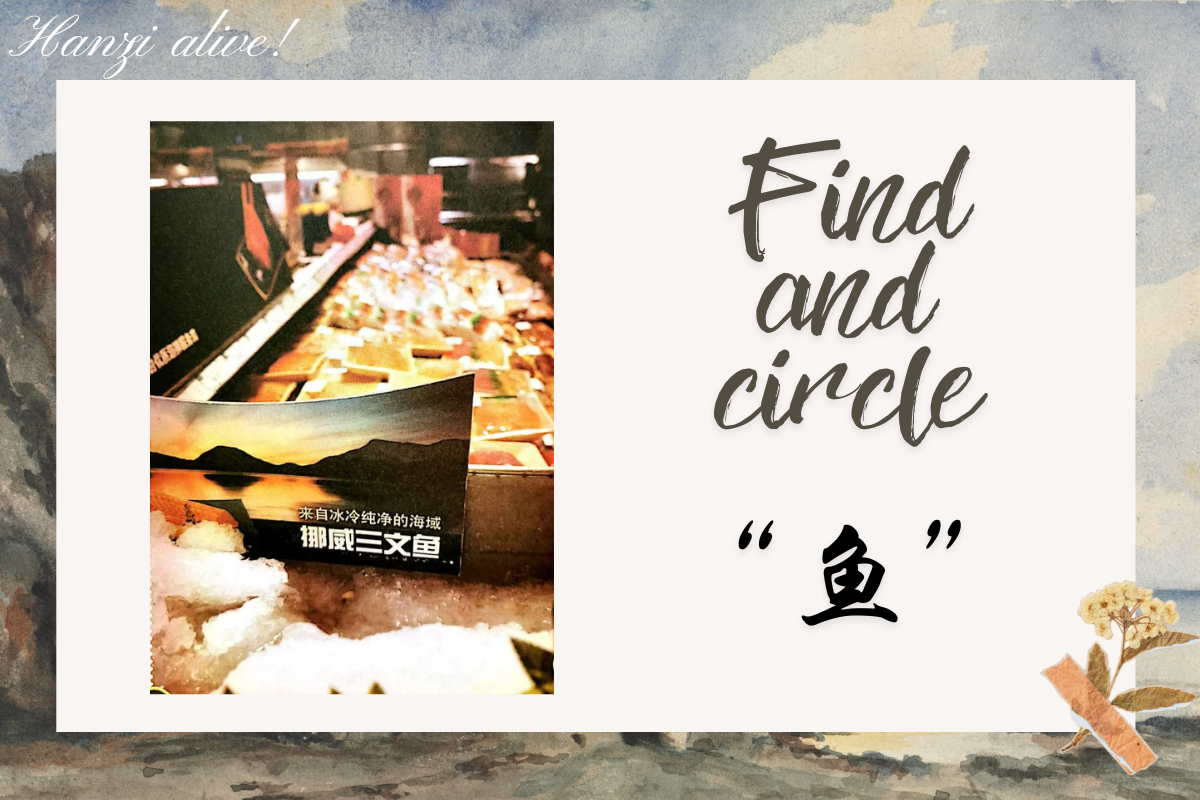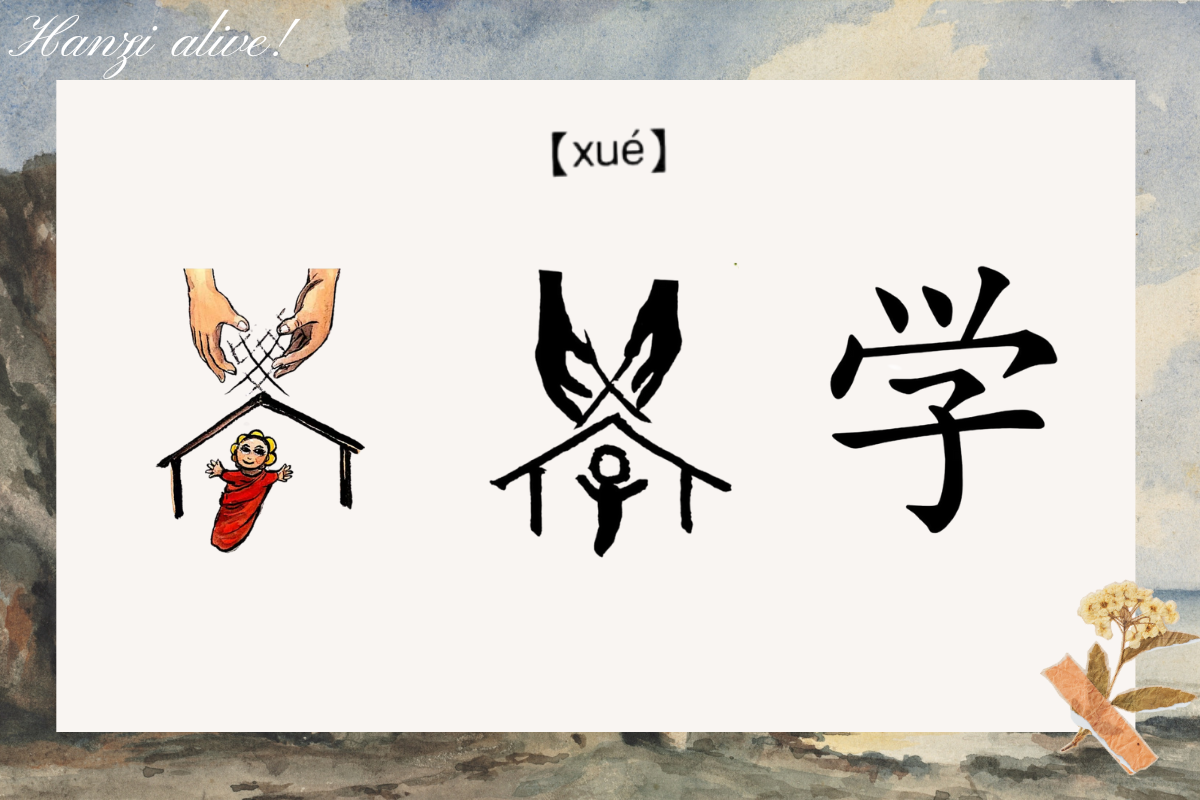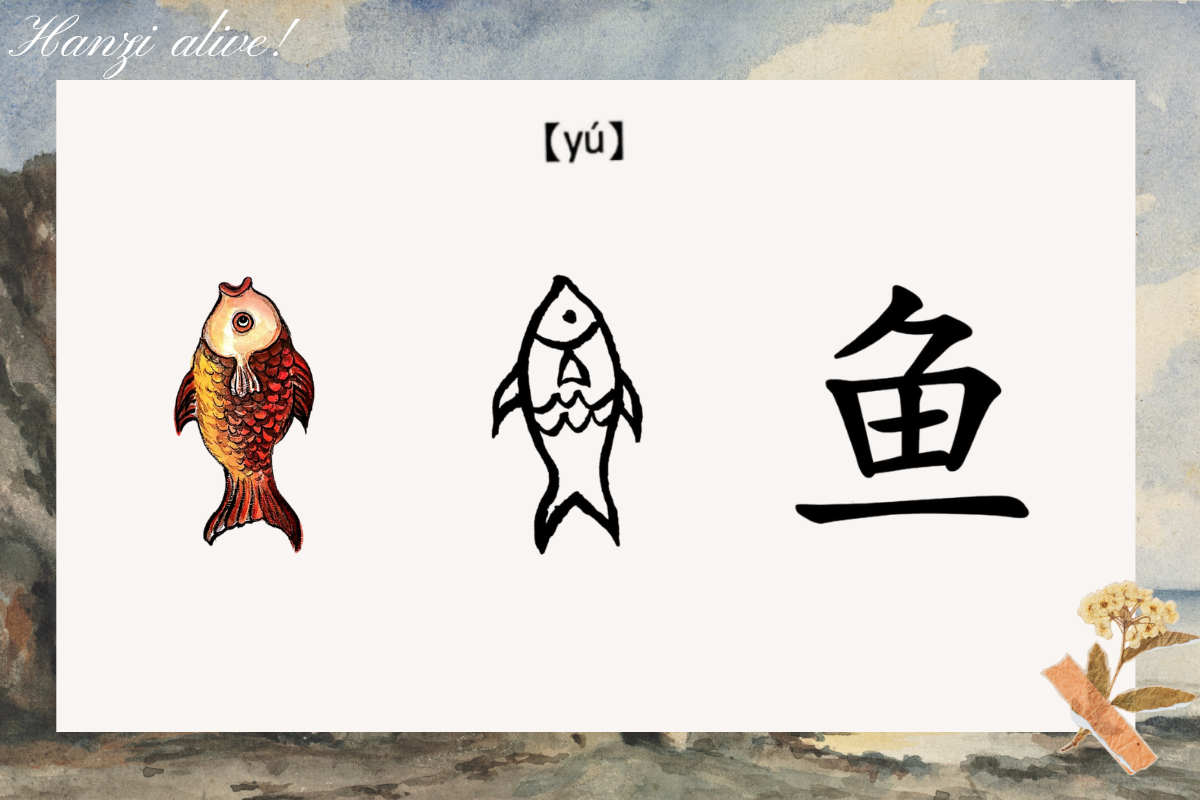Hanzi Alive!(22)
Chinese characters are like building blocks of wisdom - look, "鱼" (yú) is the water creature swimming into paper, while "学" (xué) is even more fascinating: the hands under the roof are weaving the net of knowledge (⺍+冖+子). These two characters, one from natural drawing and one hiding the civilization of the classroom.
学(xué)
Explanation
- A pair of hands on top appear to be weaving; a house at the bottom appears to contain a child. One could interpret this as teaching a child the skills of weaving. This word is "学," which can be used as a verb in "学习" (to learn) or as a noun in "学校" (school). Preceding it with "小," "中," or "大" would create the words meaning elementary school (小学), middle school (中学), and college (大学).
Example
- We study Chinese every day.
我们每天学中文。
wǒ men měi tiān xué zhōng wén. - She is a good student.
她是一名好学生。
tā shì yì míng hǎo xué shēng.
Find and circle "学" in the picture

鱼(yú)
Explanation
- This is a pictograph depicting a "fish", even small children can recognize it.
Example
- Fish swim in the river.
鱼在河里游。
yú zài hé lǐ yóu. - Grandma cooked fish soup.
奶奶煮了鱼汤。
nǎi nai zhǔ le yú tāng.
Find and circle "鱼" in the picture

Now you have caught the dual magic of Chinese characters: when you write '鱼', you are drawing nature, and when you write '学', you are constructing a classroom. From swimming creatures to inquisitive children - it turns out, each Chinese character is a miniature Eastern classroom.

